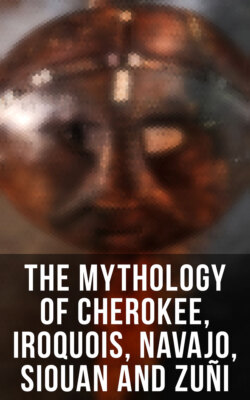Читать книгу The Mythology of Cherokee, Iroquois, Navajo, Siouan and Zuñi - James Mooney - Страница 80
На сайте Литреса книга снята с продажи.
Bird- and Serpent-Worship and Symbols
ОглавлениеThe serpent and the bird appear sometimes separately, sometimes in strange combination, in North American mythology. The bird is always incomprehensible to the savage. Its power of flight, its appearance in the heavens where dwell the gods, and its musical song combine to render it in his sight a being of mystery, possessing capabilities far above his own. From it he conceives the idea of the winged spirit or god, and he frequently regards it as a messenger from the bright regions of the sun or the sky deity. The flight and song of birds have always been carefully observed by primitive people as omens of grave import. These superstitions prevailed among the Red Race no less than among our own early ancestors. Many tribes imagined that birds were the visible spirits of the deceased. Thus the Powhatans of Virginia believed that the feathered race received the souls of their chiefs at death, and they were careful to do them no harm, accordingly. The Algonquins believed that birds caused the phenomenon of wind, that they created water-spouts, and that the clouds were the spreading and agitation of their wings. The Navaho thought that a great white swan sat at each of the four points of the compass and conjured up the blasts which came therefrom, while the Dakotas believed that in the west is the home of the Wakinyjan, 'the Flyers,' the breezes that send the storms. The thunder, too, is regarded by some Indian peoples as the flapping of the pinions of a great bird, whose tracks are seen in the lightning, "like the sparks which the buffalo scatters when he scours over a stony plain." Many of the tribes of the north-west coast hold the same belief, and imagine the lightning to be the flash of the thunder-bird's eye.
